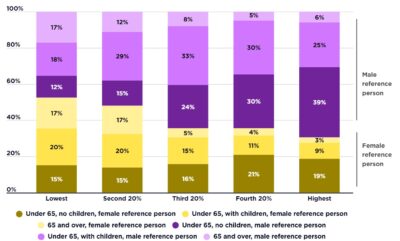This graph shows the poverty rate of people by their country of birth, divided into those born in Australia, those born in a mainly English-speaking country; and those born elsewhere.
2017-18: The graph shows that people born overseas in a country where English is the main language have a much lower poverty rate – at 9.7% using the 50% median income poverty line and 15.9% using the 60% median income poverty line – compared with those born elsewhere – at 17.5% using the 50% median income poverty line and 27.1% using the 60% median income poverty line.
2015-16: The graph shows that people born overseas in a country where English is the main language have a much lower poverty rate – at 10% using the 50% median income poverty line and 17% using the 60% median income poverty line – compared with those born elsewhere – at 17% using the 50% median income poverty line and 27% using the 60% median income poverty line. This likely reflects the lower employment rates among people from countries where English is not the main language. For example, in December 2015, of all new adult migrants from North-West Europe, 82% were employed 5-10 years after arrival, compared with only 38% of those who migrated from North Africa or the Middle East. This reflects a range of employment factors including access to labour market information and access networks; discrimination in employment; and recognition of workforce skills.


